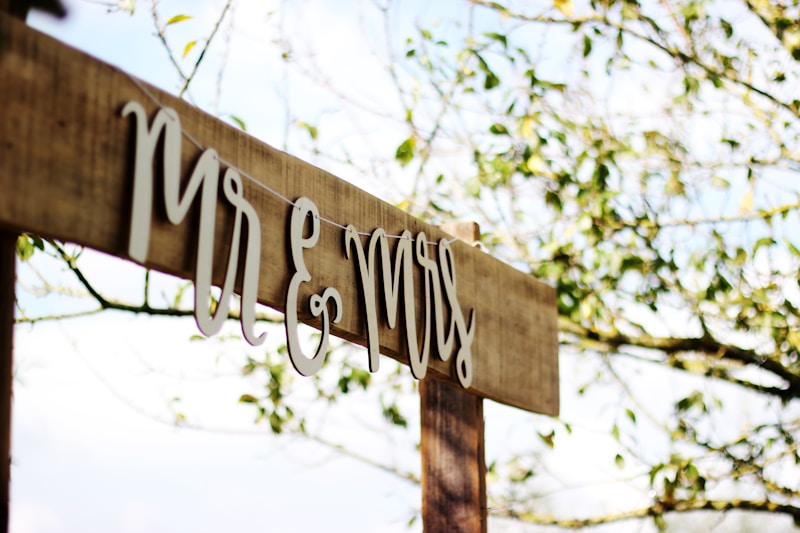Merging Tradition with Modern Wedding Elements: A Harmonious Celebration
Merging Tradition with Modern Wedding Elements: A Harmonious Celebration
Weddings are a beautiful emblem of love, representing a commitment that transcends time and culture. As couples navigate the path to their special day, many find themselves at the crossroads of tradition and modernity. Merging tradition with modern wedding elements creates a unique, personalized celebration that reflects the couple's shared values and vision. This article explores the nuances of blending time-honored practices with contemporary trends, making your wedding genuinely unforgettable.
The Importance of Tradition in Weddings
Tradition plays a significant role in weddings, offering couples a sense of identity and belonging. Whether it’s a religious ceremony, cultural rites, or family customs, these elements are steeped in meaning. They not only honor the past but also provide a framework for the future. Many couples choose to incorporate these time-tested traditions for various reasons:
- Family Connection: Engaging in customs passed down through generations strengthens family bonds.
- Cultural Significance: Many traditions carry rich histories that celebrate one’s heritage.
- Symbolism: Traditional practices often embody profound meanings, adding depth to the ceremony.
Modern Elements: A Fresh Perspective
As society evolves, so do wedding trends. Modern weddings often reflect contemporary lifestyles and values, emphasizing personalization and creativity. Here are several popular modern elements couples are integrating into their wedding plans:
1. Unique Venues
Gone are the days when couples felt confined to traditional church settings. Today, many are opting for unique venues such as art galleries, outdoor gardens, or rustic barns. This shift allows for personalization in décor and atmosphere, creating a memorable backdrop for the ceremony.
2. Creative Attire
Modern couples are breaking away from conventional wedding attire. Wedding dresses come in various styles, colors, and even fabrics, while grooms are experimenting with suits that reflect their personalities. Merging traditional attire with modern twists, like a timeless lace gown paired with vibrant accessories, creates an eye-catching look.
3. Customizable Catering
Traditionally, weddings had a fixed menu, but modern couples are now opting for customizable catering options. From food trucks to gourmet stations, this flexibility reflects a couple's tastes and engages guests in a fun culinary experience.
| Traditional Elements | Modern Elements |
| Religious customs | Personalized vows |
| Classic wedding cake | Dessert bars |
| Formal sit-down dinner | Buffet style or interactive food stations |
| Traditional music | Live bands or DJs with personalized playlists |
Merging Traditional and Modern: Best Practices
Combining tradition and modernity can be a delicate balance. Here are some best practices for ensuring that your wedding seamlessly blends these elements:
1. Identify Core Values
As a couple, take time to discuss which traditions are most meaningful to you. This will help you identify what elements you wish to preserve and how to frame them within a modern context.
2. Find Inspiration
Look for inspiration from weddings, blogs, and other media. Platforms like Pinterest can help visualize how traditional and modern elements can coexist beautifully.

3. Personalize Your Elements
Your wedding should tell your story. Customizing traditional elements, such as incorporating family heirlooms into your décor or designing your own invitations, adds a personal touch that makes the ceremony unique.
4. Seek Professional Help
Consider hiring professional wedding planners specializing in blending traditional and modern themes. Their expertise can be invaluable in executing your vision harmoniously.
Key Considerations in Merging Tradition and Modernity
When merging traditional and modern wedding elements, it’s essential to consider:
- Guest Experience: Make sure that guests from different backgrounds feel included and comfortable. Provide context for any customs that may be unfamiliar to them.
- Budget Constraints: Traditional elements may come with certain costs, so budget wisely. Determine which traditions you are willing to invest in and where you can be more flexible.
- Time Management: Merging different elements can sometimes complicate planning. Create a timeline that incorporates both traditional rituals and modern elements efficiently.
Another Layer: Integrating Cultural Elements
If you come from diverse backgrounds, integrating culturally significant aspects can enhance the depth and beauty of your celebration. Explore how different cultures marry tradition with modernity, giving your wedding a unique flair. For example, couples may blend a Western ceremony with Indian customs, creating a vibrant tapestry of cultural celebration.
Conclusion
Merging tradition with modern wedding elements offers a chance to personalize your special day uniquely. While honoring the significant customs that shape your identity, it’s also essential to embrace innovations that resonate with your personalities and preferences. Remember to remain authentic to yourselves throughout the planning process. By blending these elements thoughtfully and creatively, you can create a wedding that is not only memorable but also meaningful. As you embark on this journey, keep in mind to communicate openly with each other and consider seeking advice from those who have successfully navigated this blending of worlds. Happy wedding planning!
